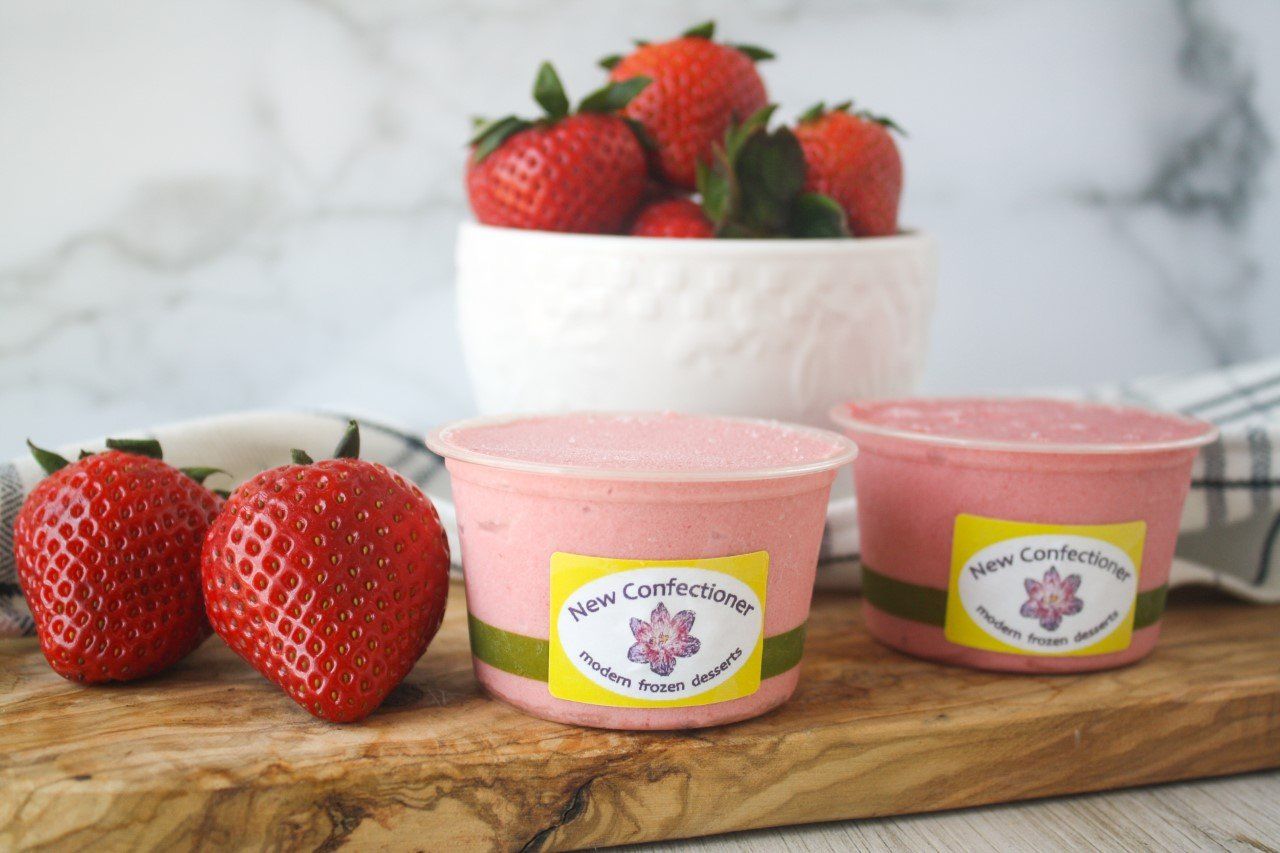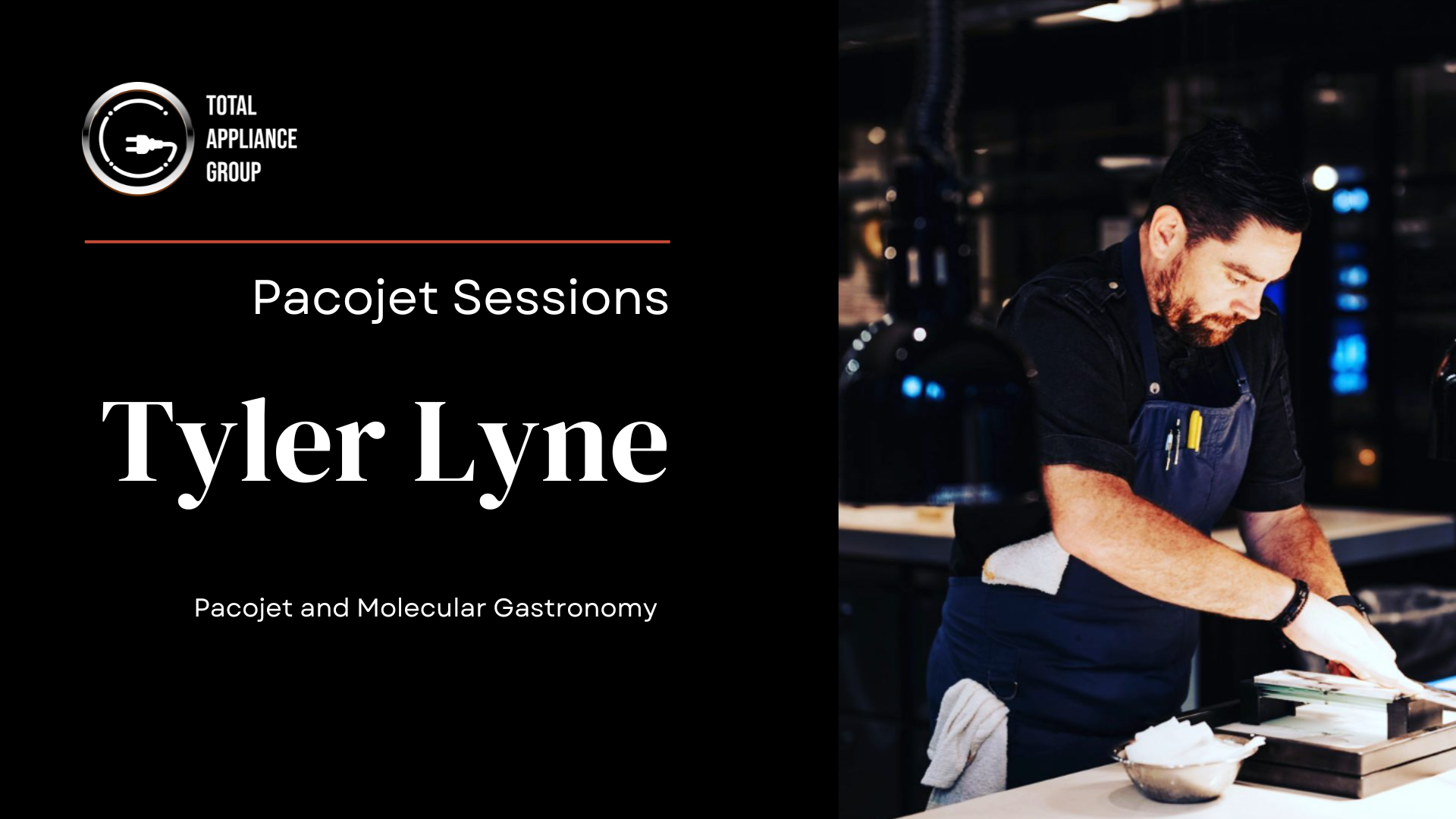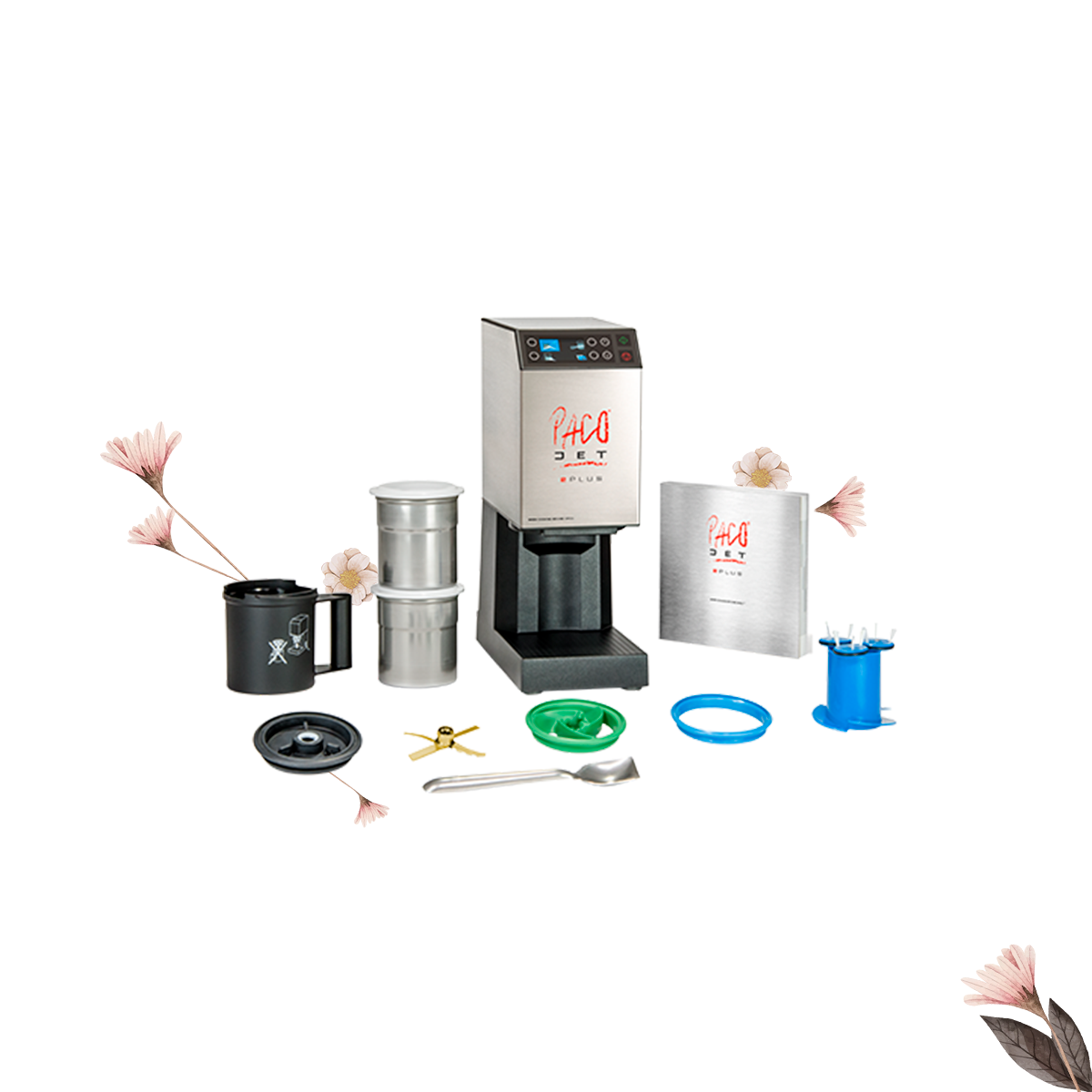Tell me a little about your career, how did you become a chef?
James Spica:
I started out as a Technician for the Verizon telephone company, and I worked there for 30 years. While I was there I got two degrees in Art, bachelor's degree and masters degree in fine art.
When my career in technology was coming to an end I got an ice cream machine as a birthday gift and I became completely obsessed with making Ice cream.
I started making very rich ice cream like Mascarpone ice cream and my wife said "You have to make some kind of ice cream that we could eat everyday".
So I made like a creamsicle orange, coconut cream and a Turkish coffee sorbet.
When we had some friends over for dinner they said "wow this is really good". And that was 2010, and I just kept going from there.
I went to the Culinary Institute of America to learn more about cooking. I went to Pennstate agriculture program and ice cream laboratory and I realized: Only the big companies were doing vegan frozen desserts in 2010.
Little, by little, by little, it caught it on and I’m super busy now. Everybody understands plant based frozen desserts now, everybody gets it, it’s not a mystery, people want it.
It feels good to be a little bit ahead of the curve on stuff like that.
Can you apply your knowledge of art to your recipes? How do you do it?
James Spica:
I think actually there are two parts to art: there’s the idea, creativity, invention, and then there is the mastery of the technique.
And that was similar to making ice cream. There were flavors I wanted to make, there were ideas, and then there was the technique involved.
There is a lot to know. You can’t just make it out of anything. Now, when someone says to me, I want a Champagne sangria sorbet, well, I know exactly what I have to do to make it work.
So it’s really fun, it’s hard fun.
How did you find out about Pacojet?
James Spica:
I was reading a New York Times article, about a young guy who was an information technology specialist, who was getting burned out on the constant deadline and high pressure.
He was in San Francisco, and he started a sorbet company, called Scream sorbet. He was using Pacojet exclusively! I hadn’t heard of anyone using Pacojet for production only in restaurants.
It’s such an amazing tool where you can make one serving of fresh ice cream per customer if you want, or a whole pint...This guy had 5 of them!
I thought the size of the Pacojet was right, and the fact that you didn’t need any kind of special electricity. Beakers fit into a regular freezer, so It was perfect for me!
And the quality of the frozen desert, you can not match this, anywhere! People don’t even get it how good it is… It’s like silk! It makes the most beautiful product ever!
Once you got your Pacojet did you find it easy to use? What was your first recipe?
James Spica:
My first recipe was the two flavors I was doing with a home ice cream maker, the Turkish chocolate coffee, and the creamsicle but it makes my product so Much Better. It makes my products so much more creamer.
Then my wife started mentioning flavors that I should make and she was really right on with the Pacojet, everything started coming out just so nicely. I was experimenting more, my flavors was just coming out great. I started with 2 flavors, and by the end of the season I had 5 flavors.
And now I have over a hundred flavors that I rotate through the season, I think I have 17 flavors that I offer at a time. I also make special orders for jobs like cucumber wasabi ice cream, which I did for a catering job last year.
Comparing the Pacojet to other ice cream makers, what makes the Pacojet better?
James Spica: I have an Emery Thompson batch freezer, Emery Thompson invented the batch freezer in 1905 his great-grandson, Steven Thompson, is still running the company.
And the difference is: every single thing in the bath freezer is absolutely critical, like if you don’t have enough fat, if you leave it in the machine for too long, if you don’t have enough sugar. It’s just so critical.
The Pacojet is so forgiving, you make a litre/pint if that doesn’t work you’ve only wasted a pint. It’s so much safer for experimenting.
When I take that beaker out, there is nothing that compares to the silky quality of that ice cream, it’s amazing!
How was your experience with our service center? How fast was the service?
James Spica:
Scott is one of a kind, he takes it very seriously, and his, what’s the right word here, his reputation in this kind of service… I’ll give you an example:
The machine wasn't working properly, so I called up Scott, he told me exactly what to do.
He walked me through how to take the machine apart, he got me up and running, now that was until I couldn’t come in, but he saved me.
Another time, the air hose, went up into the machine, so I called him up, he was on vacation, he called up the shop, they sent me the air hose, he talk to me through the installation of the air hose.
He does the things that I need him to do, there is never a question. I live a 125 miles from here, so I wait in the parking lot for Scott and I ask him if he can fix my machine while I wait. He always says yes. The exact kind of service that I need, when I need it.
There are very few people that I’ve met that have the commitment to the product that Scott has, not just the Pacojet itself which is a tool that you can’t compare to anything, but to service this tool, is very specific.
Do you believe that Pacojet can be used by home chef's as well as professional chefs?
James Spica:
Absolutely, it’s a little expensive for the average home chef, but some kitchens nowadays have viking stoves and sub zero refrigerators, stainless steel countertops and stone countertops, for making pizza Dough.
People are doing this, and Pacojet is not obviously just a frozen dessert system. You can make so many things with Pacojet, and the size of it, it’s the size of a coffee maker, it could fit on the counter in any home chef space.
How much is a Viking Stove? It’s very expensive, so the same home chef that have a Viking Stove, would probably have no problem having a Pacojet.
What would you say to someone who doesn't have a Pacojet yet?
James Spica: Well, from the frozen desert point of view, I do not see how they could not have one. There’s no downside to it.
The product is so creamy and perfect. You can take your idea from the test batch, make it exactly right and put it into service.
If I had a big restaurant, I would certainly have a Pacojet station in my kitchen. If you needed to make something for one customer, you can even spin off product for one customer.
You can make stuff so costume that it’s a super valuable tool, that again I don’t see the downside to it, I mean: the size, the quality of the product, the way you can customize into your own needs.
What's your favorite recipe made with Pacojet?
James Spica:
It’s so simple, strawberry rhubarb ice cream.
Rhubarb is a vegetable, that’s on the bitter side, it’s a very British thing. Strawberry Rhubarb is very British, but it has just 4 ingredients:
- Strawberry;
- Rhubarb;
- Coconut cream;
- Agave.
And it’s my best-selling flavor, it’s my signature flavor, nobody has it, and everybody who comes to my frozen dessert stand, every single person comments, they all want it, they all take it.
Four ingredients, you can’t go wrong.
Why vegan?
James Spica:
I’m not vegan, but I eat mostly plant based diet, and I’ve been that way almost my whole life.
I live in New York, New York is a place that has many rules and regulations. So if I was going to do Milk or cream, I would have to have a room in my commercial kitchen just for milk, it’s called a milk room.
It has to have a separate drain on the floor, it has to have separate sanitation and I have to be inspected by the health department. There are so many rules. With the Pacojet I can avoid all that by going vegan.
And really good dairy is only about 9% fat, and to make really good ice cream you need 14% fat. Coconut milk and coconut cream have 17% fat.
It comes in a can, so it’s not dairy, so I don’t need a milk room, I don’t need the health department, I only have one inspector from the department of agriculture and market.
It made my business so much more possible, and the timing of it seems right to me. At the time, not a lot of people were doing non dairy frozen desserts, so I became a unique offering and I became a curiosity, a lot of people were interested in what are you doing?
It became a niche of marketing for me. And I fit right into that because my products are so good, nobody says “oh I miss dairy”. It’s just delicious, so it’s pretty helpful.
Have you tried to make sugar-free ice cream?
James Spica: To make really good ice cream, you need sweetener, because sugars (agave, cane sugar…) inhibit freezing. When you inhibit freezing, you keep your ice crystals very small, and that’s why it’s creamy. Because you have tiny little ice crystals.
If you have less than 15% sugar, the ice crystals are bigger. So you can’t really make a sugar-free, I mean people use things like aspartame which is an alcohol made from sugar.
Alcohol, fat and sugar inhibit freezing, so you want to have a combination of those things. You can use salt, salt as well inhibits freezing, but you don’t want too much salt.
But people use salt in frozen dessert recipes, so you get to that point where you have a creamy product.
So far, I’ve not been able to do a sugar free flavor. I’ve done ice pops that were made with overripe fruit. But that’s a lot of sugar on overripe fruit.
Conclusion
James Spica: I did say this already but, I have friends in the ice cream business, when I visit their store I see their milk room and I see what they do to make their products. I ask them: why wouldn’t you get a Pacojet just to do test patches?
Because you can make small test patches and you don’t have to commit to 6 gallons of ONE ice cream, and they’re like: well it's expensive, and I say: but don’t you see how in a long run it’s not expensive? Because you’re not wasting anything you’re making a pint test batch and once you have it worked out you can make as much as you want.
It’s funny too because people don’t always see the value of things they haven't done before. But again, I don’t see what the downside would be to have a Pacojet in your kitchen.
The size of it and the utility of it, it does so many different things, even the different blade kits (I just use 1 blade) but there are blade kits for that, puree, fruit… Really, it changes the way you use your kitchen.
Show us your recipe:














